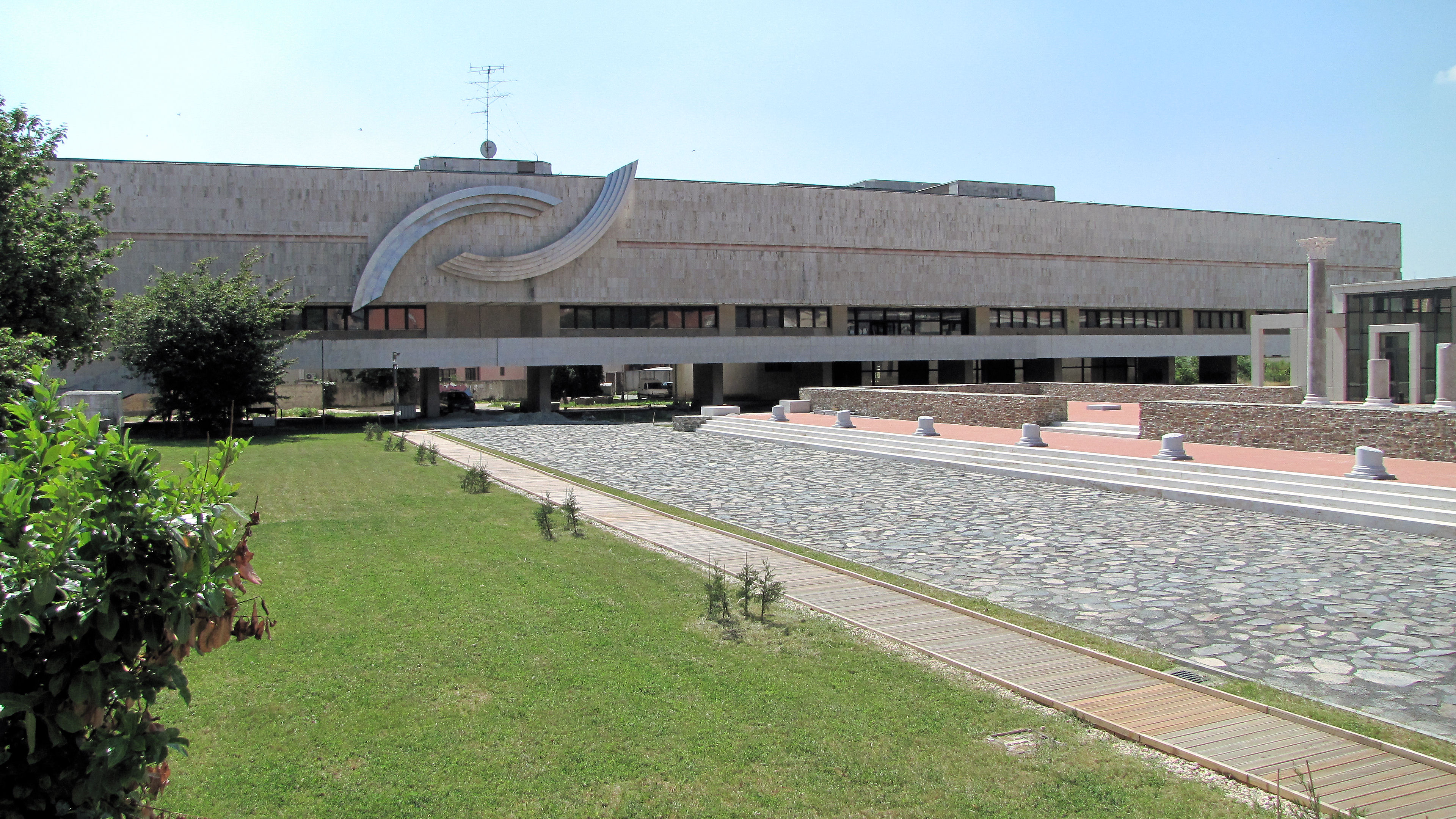The creation of the modern collection of the Gallery of Szombathely was based on the notion of “progress.” Indeed, this notion made it possible to bring a number of contradictory ambitions under one roof. The notion of “progress” originated in Marxism with Hegelian roots, and it also goes back to the philosophy of Antiquity. Primarily, the notion refers to linear development, and it was also used in the 1950s as a synonym for social advancement. The ideologists (of the era) applied both meanings of the notion. At the entrance to the museum, there is a short sentence engraved in stone still proclaiming: “It (museum) was built by the hometown of Gyula Derkovits with the collaboration of society. It has been designated to serve as a home to progressive art and to make life better and meaningful.”
The first date in the chronicle of the Gallery of Szombathely was 21 May 1976, and this day could be considered the beginning of the museum. At the time, the 25th Artist Camp of Zsennye was being held, and Dr György Gonda, the chair of the county council, made a proposal to establish a gallery in Szombathely. In the official forums and public discourses represented by the press (e.g. reports), the prospective museum was called a socialist museum or left-wing museum. But in professional circles it was called a modern museum, and it was compared to Western museums.
The gallery itself was the successor to two previous art collections: Gyula Derkovits’s (born in Szombathely) collection grew gradually, and in 1976 the widow of the communist painter István Huber Dési donated her husband’s prestigious bequest to Szombathely as well. At the same time, people began collecting works by the Group of Hungarian Socialist Artists and works of contemporary art. The period of the museum’s opening was turbulent. Between 1983 and 1984, three directors came in close succession, and they each had different ambitions, though they each knew and supported the fine arts with an orientation towards the West. The final assignment was received by Nándor Salamon. After the political transition, the director was allowed to keep his seat.
The Gallery of Szombathely opened on 20 February 1985. Construction costs amounted to 100 million HUF: 40% of the budget came from donations and 60% from state support. There were several incidents which were interpreted as instances of direct political influence (communist Saturdays, socialist brigades, donations from students’ summer earnings), but the population paid close attention to the project.
Similarly to the historical collections, the contemporary section was also extended. Due to the so-called “two million purchases,” the content of the collection was often similar to other museum’s collections. The “two million purchases” (initiated centrally by the state) meant ample opportunity for museums to extend their collections with modern and contemporary artworks, although only one central list of artworks existed, so the different interests of the museums and curators could come into conflict. Unfortunately, on these grounds it was almost impossible to follow a solid concept of collecting. This was also the case with the Gallery of Szombathely. The museum received some masterpieces, but its concept of collecting was not consistent. Occasionally, the museum could purchase from artists directly.
It is important to emphasize that the notion of “progress” played a significant role for the creators and the critics of the collection during the 1970s and 1980s as a historical reference connecting the two periods of art, the art of the first half and the second half of the 20th century. Although the importance of this reference diminished in the 1980s. In the 1970s, a new interpretation of the notion emerged: “progress” was interpreted as the antagonist to the commercial. That was the case with music, although there was an existing relationship between musicians and artists, which found expression in a variety of ways.
In the 1980s, the cultural-aesthetical meaning of progress lost its strength. As Gabriella Ujlaki noted in one of her essays, progress as a model of permanent development vanished, and instead the need for constant novelties in art led necessarily to commercialization. In her text, progress was also a synonym for the avantgarde. Still, during this period the notion of progressive and socialist could be seen as synonyms, and neo-avantgarde artists also identified themselves with progress, but they distanced themselves from the official socialist ideology, to which they were opposed.
The gallery was inaugurated by György Aczél (the main actor in the cultural politics of 1960sand 1970s) on 20 February 1985. Aczél’s secretariat asked for a list of artists whose works were on display at the exhibition before the opening. As a result, the works of György Galántai and András Wahorn had to be removed, but the next day they were put back on the wall.

